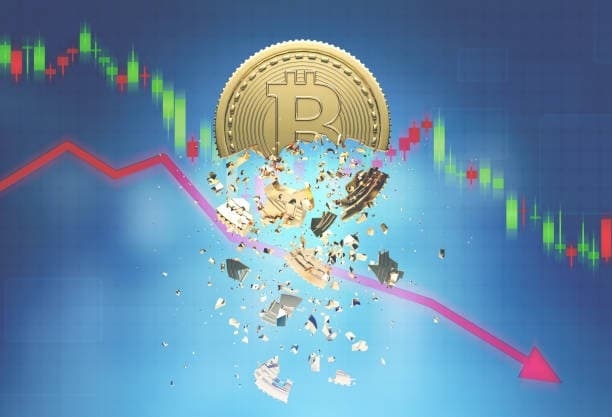Imagine a world where the value of your digital assets is as unpredictable as the weather, yet as vital as the air we breathe. Welcome to the world of Bitcoin and its rollercoaster ride with macroeconomics. This digital currency, born out of the ashes of the 2008 financial crisis, has been a beacon of hope for some and a source of skepticism for others. But one thing is certain, the dance between Bitcoin and macroeconomic factors is a spectacle worth watching. Let’s dive into the fascinating interplay between bitcoin price and the broader economic landscape.
The Invisible Hand of Macroeconomics
Bitcoin price, like a leaf in the wind, is influenced by the invisible hand of macroeconomics. This term refers to the broad forces that shape our economy, from interest rates to inflation, and everything in between. These forces don’t just sway traditional markets; they have a profound impact on the price of Bitcoin as well. Let’s explore how these macroeconomic factors can make or break the value of your digital gold.
Inflation and Bitcoin Price
Inflation, the silent thief that erodes the value of money, has a curious relationship with Bitcoin price. As central banks around the world print more money, leading to inflation, Bitcoin’s value often rises. This is because Bitcoin has a capped supply of 21 million coins, making it a deflationary asset. When traditional currencies lose value, Bitcoin’s fixed supply makes it an attractive hedge. Its price, therefore, can act as a barometer for global inflation trends.
Interest Rates and the Bitcoin Price Pendulum
Interest rates, the lifeblood of the economy, also have a significant sway over Bitcoin price. When interest rates are low, investors often seek alternative investments to preserve their wealth. Bitcoin, with its potential for high returns, becomes a magnet for such investors. Conversely, when interest rates rise, the allure of riskier assets like Bitcoin can diminish as the opportunity cost of holding them increases. This seesaw effect is a key factor in understanding Bitcoin’s price movements.
Economic Uncertainty and Bitcoin Price
In times of economic uncertainty, Bitcoin price often shines. Geopolitical tensions, trade wars, and economic crises can lead to a flight to safety or a flight to risk, depending on investor sentiment. Bitcoin, being a decentralized asset, offers a safe haven during times of economic turmoil. Its price can skyrocket as investors look for ways to protect their wealth from the whims of traditional financial systems.
Regulatory Environment and Bitcoin Price
The regulatory environment plays a crucial role in shaping Bitcoin price. Strict regulations or bans on cryptocurrencies can lead to a drop in Bitcoin’s value, as seen in various countries where such measures have been implemented. On the other hand, clear and supportive regulation can boost investor confidence, leading to an increase in Bitcoin price. The regulatory landscape is a dynamic force that can either pave the way for Bitcoin’s adoption or create hurdles in its path.
Market Sentiment and Bitcoin Price
Market sentiment, a collective feeling about the future of an asset, is a powerful driver of Bitcoin price. Positive sentiment can lead to a surge in Bitcoin’s value as more people buy into the digital currency, while negative sentiment can cause a drop. This sentiment is influenced by macroeconomic factors, news, and global events. For instance, positive economic data can lead to a decrease in Bitcoin price as investors move back to traditional assets, while negative data can have the opposite effect.
Global Economic Growth and Bitcoin Price
The health of the global economy also has a direct impact on Bitcoin price. During periods of strong economic growth, investors may prefer to invest in traditional markets, leading to a potential decrease in Bitcoin’s value. However, in times of economic downturn, Bitcoin can act as a hedge against market volatility, causing its price to rise. This inverse relationship is a key aspect of Bitcoin’s interaction with the global economy.
Bitcoin Price and the Dollar’s Strength
The strength of the US dollar is another macroeconomic factor that influences Bitcoin price. When the dollar is strong, it can lead to a decrease in Bitcoin’s value as investors may prefer the stability of the dollar over the volatility of Bitcoin. Conversely, a weak dollar can make Bitcoin more attractive, potentially driving up its price. This relationship is particularly important given the dollar’s role as the world’s reserve currency.
Conclusion: Navigating the Macroeconomic Tides
Understanding the intricate dance between Bitcoin price and macroeconomic factors is essential for anyone invested in or interested in the digital currency. While it’s impossible to predict with certainty how these factors will affect Bitcoin’s value, being aware of them can help navigate the often tumultuous waters of the cryptocurrency market. As the world economy continues to evolve, so too will the relationship between Bitcoin and macroeconomic forces. Staying informed and adaptable is key to thriving in this dynamic digital era.










